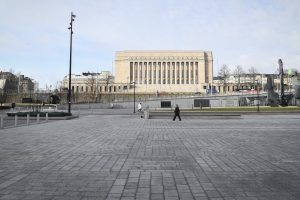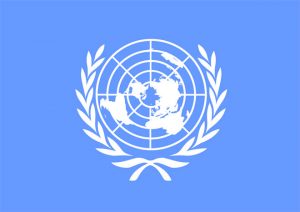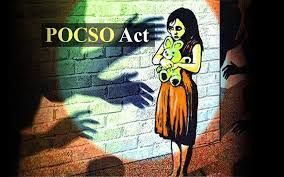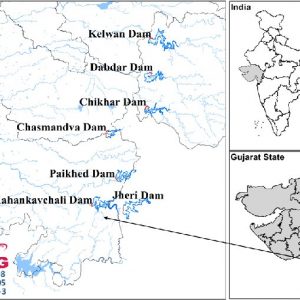Today Current Affairs: 23rd March 2022 for UPSC IAS exams, State PSC exams, SSC CGL, State SSC, RRB, Railways, Banking Exam & IBPS, etc
Table of Contents
Section 144 Imposed In Telangana:

Section 144 has been imposed in Bodhan town in Telangana after protests turned violent over the installation of a statue of Chhatrapati Shivaji at Ambedkar junction in the town by the Shiv Sena and BJP workers.
- Section 144 of the Criminal Procedure Code (CrPC) of 1973 generally prohibits public gathering.
- It authorises the Executive Magistrate of any state or territory to issue an order to prohibit the assembly of four or more people in an area.
- According to the law, every member of such ‘unlawful assembly’ can be booked for engaging in rioting.
- The maximum punishment for such act is three years.
- Moreover, obstructing police from breaking up an unlawful assembly is a punishable offence as well.
- Section 144 also restricts carrying any sort of weapon in that area where it has been imposed and people can be detained for violating it.
- Section 144 is imposed in urgent cases of nuisance or apprehended danger of some event that has the potential to cause trouble or damage to human life or property.
- No order under Section 144 shall remain in force for more than two months but the state government can extent the validity for two months and maximum up to six months. It can be withdrawn at any point of time if situation becomes normal.
- Section 144 was used for the first time in 1861 by the British Raj, and thereafter became an important tool to stop all nationalist protests during the Freedom Struggle. However, the use of the section in Independent India remains controversial as very little has changed.
Section 144 vs Curfew:
- Section 144 is generally prohibitory in nature. It restricts from public gathering, but doesn’t bar it all together.
- A curfew, on the other hand, orders people to stay indoors for a specific period of time.
- So, the authorities can impose curfew for certain period of time.
- One also needs a prior approval from the local police for moving out during curfew.
Cyclone Asani:

The cyclone seems to be carrying thunderstorms for the eastern coast of India which includes West Bengal, Odisha, etc.
- Meteorologists have predicted that the cyclone will move towards the north.
- The name of the cyclone has been given by Sri Lanka and “Ashani” translates to “Wrath” in the Sinhala language.
- The sea surface humidity, as well as temperature, is related to the development of cyclones, hence, the Bay of Bengal acts as a good location for the formation of cyclones as this region receives more rainfall along with slow breezes that keep the temperature reasonably warm all year. The warm air currents help in cyclone development as it raises the temperature of the surface.
- The names and lists of cyclones are maintained by the World Meteorological Organisation’s (WMO) international council.
- They also update this list of names.
- In the original list, only female names were added. In 1979, male names were added to be used for the naming of cyclones.
- The naming lists are used alternatively. In a rotating fashion, six different lists are being utilized to name the cyclones.
World Water Day 2022 : Theme

On 22nd March, World Water Day is observed annually. This day is observed to raise awareness regarding the importance of water and its conservation.
- This day focuses to support the achievement of the Sustainable Development Goal 6 (SDG 6) of the United Nations. SDG 6 looks to ensure sanitation and safe water for all across the globe by 2030.
- This day acts as a reminder for us to take precautionary steps to tackle water crisis across the globe.
- The theme of World Water Day 2022: “Groundwater, making the invisible visible” is the theme for this year’s World Water Day.
- The programs that have been organized for this day will focus on groundwater importance. Many organizations, as well as individuals, are being called upon to create awareness regarding this resource which is continuously depleting.
- In 1992, during the United Nations Conference on Environment and Development held in Rio de Janeiro, the idea to observe this day was first put forward.
- The UN General Assembly, in 1992, adopted a resolution declaring 22nd March as World Day for Water.
- The observation of this day began in 1993.
Gulf Business Summit:

Delegates from 33 companies from Hong Kong, the UAE, and Saudi Arabia arrived in Srinagar to instill and gauge the growing situation in Jammu & Kashmir for investments and will also see that the MoUs amounting to Rs. 3,000 crores, signed earlier this year, are utilized properly.
- Gulf Business Summit will be attended by the delegates with the aim of discussing the exploration of investment opportunities in various sectors across Jammu & Kashmir.
- For the first time a Saudi Arabia-based investor has shown interest in business opportunities in Jammu & Kashmir.
- The government of Jammu & Kashmir had signed MoUs in the month of January with various UAE–based companies such as Lulu, Emaar, Al Maya Group, MATU Investments, Century Financial, GL Employment Brokerage LLC, Noon e-commerce, etc.
- Near about 16,000 kanals which is equivalent to 1,999.9 acres of land bank have been opened so that investments can be done in Kashmir.
- As there is a huge significance of Jammu & Kashmir as a major tourism hub, the delegation will also be visiting tourist destinations such as Pahalgam and Gulmarg, to explore business opportunities in these places.
- In this summit, pitch presentations of start-ups, exporters, and women entrepreneurs will be conducted.
- An overview of the silk and cottage industries along with product displays and meets with artisans have also been planned.
2nd India-Australia Virtual Summit:

Prime Minister Narendra Modi and Prime Minister of Australia Scott Morrison held the 2nd India-Australia Virtual Summit during which they reviewed the multi-faceted relationship between the two countries and exchanged views on regional and global developments.
- Both the leaders expressed satisfaction at the progress made under the Comprehensive Strategic Partnership established during the 1st Virtual Summit in June 2020.
- Prime Minister Modi expressed his satisfaction at the enhanced scope of the relationship which now covers such as trade and investments, defence and security, education and innovation, science and technology, critical minerals, water management, new and renewable energy technology, Covid-19 related research, etc.
- Prime Minister Modi thanked Scott Morrison for the special gesture in returning 29 ancient artefacts to India.
- These artefacts comprise sculptures, paintings and photographs, across centuries, some dating back to the 9th-10th century, from different parts of India.
- The artefacts include 12th century Chola bronzes, 11th-12th century Jain sculptures from Rajasthan, 12th-13th century sandstone Goddess Mahisasuramardini from Gujarat, 18th-19th century paintings and early gelatin silver photographs.
- A Joint Statement was issued on the occasion covering various aspects of the deepening Comprehensive Strategic Partnership.
- Both sides also agreed to establish annual summits between the Prime Ministers under the Comprehensive Strategic Partnership, thus adding a special dimension to the bilateral relationship.
What Is Finlandization?

The French President suggested Finlandization might be a realistic outcome for Ukraine if and when the Russia-Ukraine war ends.
- Finlandization refers to the policy of strict neutrality between Moscow (Russia) and the West that Finland followed during the decades of the Cold War.
- The principle of neutrality was rooted in the Agreement of Friendship, Cooperation, and Mutual Assistance (or YYA Treaty, from the Finnish “Ystavyys-, yhteistyo – ja avunantosopimus”) that Finland signed with the USSR in April 1948.
- Article 1 of the treaty reads: “In the eventuality of Finland, or the Soviet Union through Finnish territory, becoming the object of an armed attack by Germany or any state allied with the latter (meaning, essentially, the United States), Finland will, true to its obligations as an independent state, fight to repel the attack.
- Finland will in such cases use all its available forces for defending its territorial integrity by land, sea, and air, and will do so within the frontiers of Finland in accordance with obligations defined in the present agreement and, if necessary, with the assistance of or jointly with, the Soviet Union.
- In such cases, the Soviet Union will give Finland the help that it requires, subject to mutual agreement between the contracting parties.
- The 1948 treaty formed the basis of Finland-Russia relations until 1992, when Finland signed a new agreement with post-Soviet Russia.
- It lay at the heart of Finland’s foreign policy doctrine especially 1946 to 1982 and is known in international relations studies as the “Paasikivi-Kekkonen line”.
- From the perspective of Finland — whose capital Helsinki is situated just across the Gulf of Finland from St Petersburg (Leningrad) — the treaty protected it from being attacked or incorporated into the USSR like the Baltic and eastern European states.
- It allowed the country to pursue the path of democracy and capitalism while staying out of the conflict between the great powers.
- Finland did not participate in the Marshall Plan.
- It took neutral positions on matters on which the Soviet Union and the West disagreed. It stayed aloof from North Atlantic Treaty Organisation (NATO) and European military powers, and used this positioning to ward off pressure from Moscow to become part of the Soviet bloc or the Warsaw Pact.
- Marshall Plan was a U.S.-sponsored program designed to rehabilitate the economies of 17 western and southern European countries in order to create stable conditions in which democratic institutions could survive in the aftermath of World War II.
What Is The BBNJ Treaty?

The fourth meeting of the Intergovernmental Conference (IGC-4) was held in New York to conclude a draft of the instrument on the conservation and sustainable use of marine Biological diversity in areas Beyond National Jurisdiction (BBNJ).
- The IGC-4 is convened under the United Nations Convention on the Law of the Sea (UNCLOS).
- The “BBNJ Treaty”, also known as the “Treaty of the High Seas”, is an international agreement on the conservation and sustainable use of marine biological diversity of areas beyond national jurisdiction, currently under negotiation at the United Nations.
- This new instrument is being developed within the framework of the UNCLOS, the main international agreement governing human activities at sea.
- It will achieve a more holistic management of high seas activities, which should better balance the conservation and sustainable use of marine resources.
- BBNJ encompasses the high seas, beyond the exclusive economic zones or national waters of countries.
- According to the International Union for Conservation of Nature (IUCN), these areas account for “almost half of the Earth’s surface”.
- These areas are hardly regulated and also least understood or explored for its biodiversity – only 1% of these areas are under protection.
- Launched at the One Ocean Summit in February 2022, the High Ambition Coalition on Biodiversity Beyond National Jurisdiction brings together many delegations engaged in the BBNJ negotiations on a common and ambitious outcome at the highest political level.
- The negotiations are centred around a package of elements agreed upon in 2015, namely:
- the conservation and sustainable use of marine biological diversity of areas beyond national jurisdiction, in particular, together and as a whole, marine genetic resources, including questions on the sharing of benefits
- area-based management tools, including marine protected areas
- environmental impact assessments
- capacity-building and the transfer of marine technology
Dysfunction Of National Commission For Scheduled Tribes:

According to a parliamentary committee’s recent report, the National Commission for Scheduled Tribes has been dysfunctional for the last four years and has not delivered a single report to Parliament.
- NCST was set up with effect from 19th February, 2004 by amending Article 338 and by inserting a new article 338A in the Constitution through the 89th Constitution Amendment Act, 2003. Hence, it is a constitutional body.
- Article 338A inter-alia gives powers to the NCST to oversee the implementation of various safeguards provided to STs under the Constitution or under any other law for time being in force or under any other order to the Government and to evaluate the working of such safeguards.
- It consists of a Chairperson, a Vice-Chairperson and 3 other Members who are appointed by the President by warrant under his hand and seal.
- At least one member should be a woman.
- The Chairperson, the Vice-Chairperson and the other Members hold office for a term of 3 years.
- The members are not eligible for appointment for more than two terms.
- The Chairperson has been given the rank of Union Cabinet Ministers, the Vice Chairperson has the rank of a Minister of State and other Members have the rank of a Secretary to the Government of India.
Section 23 Of POCSO Act:

A 2-judge bench of the Supreme Court has delivered a split verdict on the issue whether Section 155(2) of the Code of Criminal Procedure will apply to the investigation of an offence under Section 23 of the Protection of Children from Sexual Offences Act, 2012 (POCSO).
- As per Section 155(2) CrPC, a police officer cannot investigate a non-cognizable offence without the order of a Magistrate.
- Section 23 of POCSO relates to the offence of disclosure of the identity of the victim of the sexual offence.
- One of the judges opined that disclosure of the identity of a child who is a victim of sexual offences or who is in conflict with the law is in fundamental breach of the right of the child to dignity, the right not to be embarrassed.
- The Constitution guarantees to every child the right to live with dignity (Article 21), the right to personal liberty (Article 21), the right to privacy (Article 21), the right to equality (Article 14) and/or the right against discrimination (Article 15), the right against exploitation (Article 23 & 24).
- Right to free and compulsory elementary education for all children in the 6-14 year age group (Article 21 A)
- The Directive Principles of State Policy, and in particular Article 39(f), cast an obligation on the State to ensure that children are given opportunities and facilities to develop in a healthy manner and in conditions of freedom and dignity and that childhood and youth are protected against exploitation and against moral and material abandonment.
Navroz:

The PM greeted the people on the occasion of Navroz (21st March 2022).
- Navroz is also known as Parsi New Year.
- In Persian, ‘Nav’ stands for new, and ‘Roz’ stands for the day, which literally translates to ‘new day’.
- Though celebrated in March globally, Navroz arrives 200 days later in India and is celebrated in the month of August as the Parsis here follow the Shahenshahi calendar that doesn’t account for leap years.
- In India, Navroz is also known as Jamshed-i-Navroz, after the Persian King, Jamshed.
- The king Jamshed is credited with having created the Shahenshahi calendar.
- Interestingly in India, people celebrate it twice a year – first according to the Iranian calendar and the second according to the Shahenshahi calendar which is followed by people here and in Pakistan.
- The tradition is observed by Iranians and Zoroastrian around the world.
- Navroj was inscribed in the list of UNESCO Intangible Cultural Heritage of Humanity of India in 2009.
Exercise LAMITIYE 2022:

An Indian Army contingent has arrived in Seychelles for the ninth edition of the Joint Military Exercise Lamitiye 2022 between the Indian Army and Seychelles Defence Forces (SDF).
- Seychelles is an Archipelago in the western Indian Ocean, comprising about 115 islands.
- Lamitiye, which in Creole means friendship, is a biennial training event being conducted in Seychelles since 2001.
- The aim is to build and promote bilateral military relations in addition to exchanging skills, experiences and good practices between both armies.
- Exercise Lamitiye is significant in terms of security challenges faced by both the nations in the backdrop of the current global situation and growing security concerns in the Indian Ocean Region.
Protest Against Par Tapi Narmada River-Linking Project:

The tribals in Gujarat are protesting against the Centre’s Par Tapi Narmada river-linking project.
- Envisioned under the 1980 National Perspective Plan.
- It proposes to link three rivers:
- Par, originating from Nashik in Maharashtra and flowing through Valsad.
- Tapi from Saputara that flows through Maharashtra and Surat in Gujarat.
- Narmada originating in Madhya Pradesh and flowing through Maharashtra and Bharuch and Narmada districts in Gujarat.
- The project proposes to transfer river water from the surplus regions of the Western Ghats to the deficit regions of Saurashtra and Kutch.
- The surplus water proposed to be diverted through the estimated Rs 10,211 crore Par-Tapi-Narmada link project is expected to irrigate an area of 2,32,175 hectares, of which 61,190 ha is en route to the link canal.
- According to a report by the NWDA, about 6065 ha of land area will be submerged due to the proposed reservoirs.
- A total of 61 villages will be affected, of which one will be fully submerged and the remaining 60 partly.
- The total number of affected families would be 2,509 of which 98 families would be affected due to the creation of the Jheri reservoir, the only one in Maharashtra, spread over six villages.
- In Gujarat, around 2000 families will be affected by the project.
- The districts where the project will be implemented are largely dominated, by tribals who fear displacement.
International Day Of Forests:

Observed on 21st March every year since 2021.
- The organizers are the United Nations Forum on Forests and the Food and Agriculture Organization of the United Nations (FAO), in collaboration with Governments, the Collaborative Partnership on Forests and other relevant organizations in the field.
- The occasion was established, and the date fixed, on November 28, 2012, by a resolution of the United Nations General Assembly (UNGA).
- The aim behind observing the International Day of Forests is to ‘celebrate and raise awareness of the importance of all types of forests.’
- Theme 2022: “Forests and sustainable production and consumption”.
- Forests are home to about 80% of the world’s terrestrial biodiversity, with more that 60,000 tree species.
- Around 1.6 billion people depend directly on forests for food, shelter, energy, medicines and income.
- The world is losing 10 million hectares of forest each year – about the size of Iceland.
State of Forest Report 2021:
- The biennial report by the Forest Survey of India (FSI) is an assessment of the country’s forest resources.
Highlights of the Report:
- India’s forest and tree cover has risen by 2,261 square kilometers in the last two years with Andhra Pradesh growing the maximum forest cover of 647 square kilometers.
- The total tree-and-forest cover in the country includes an increase of 1,540 square kilometres of forest cover and 721 sq km of tree cover compared to the 2019 report.
- India’s total forest and tree cover is now spread across 80.9 million hectares, which is 62 per cent of the geographical area of the country.
- The top five states in terms of increase in forest cover are Andhra Pradesh (647 sq km), Telangana (632 sq km), Odisha (537 sq km), Karnataka (155 sq km) and Jharkhand (110 sq km).
- The gain in forest cover or improvement in forest canopy density may be attributed to better conservation measures, protection, afforestation activities, tree plantation drives and agroforestry.
- Among the mega cities in the country, Ahmedabad has been the biggest loser when it comes to forest cover.
States with maximum forest cover:
- Area-wise, Madhya Pradesh has the largest forest cover in the country followed by Arunachal Pradesh, Chhattisgarh, Odisha and Maharashtra.
- 17 states/UTs have above 33 per cent of the geographical area under forest cover.




